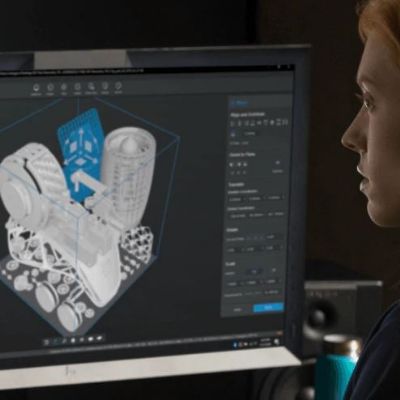Software Provides Tooling Timesaver and More
November 1, 2019Comments
Tooling design is challenging work. In the case of jigs and fixtures, the part must be held securely enough so that it will not move during machining, but not so tightly that damage or distortion can occur. Injection and casting molds need to disperse heat quickly for maximum throughput, yet evenly, lest the workpiece warp. Forging dies must withstand tremendous pressure and cutting tools require exacting geometry. Meanwhile, the tooling used with stamping, forming and extrusion processes needs all this and more.
This demanding work requires extensive knowledge of whatever manufacturing process for which the tool is used, as well as a good handle on mechanical engineering, metallurgy, hydraulics and possibly even thermal and fluid dynamics. Sometimes, even the most skilled design engineers must develop multiple iterations of a tool or tooling assembly, each requiring extensive testing and validation before manufacturing begins. When the next project comes along, the process begins anew, even if the subsequent workpiece is similar in size and function.
This decades-old status quo is about to become obsolete, at least if Christopher Cho and the team at New York, NY-based nTopology have their way. Because their nTop Platform allows engineers to streamline design, analysis and simulation within the same software system, products can be developed in a fraction of the time needed with conventional software tools.
Reusable Workflows
The design workflows within nTop Platform are reusable, Cho says. When effectively leveraged, the benefits show not only on the next project, but within the current one as well if design changes are required. This greatly reduces engineering efforts, while nTop Platform’s implicit modeling functionality allows teams to evaluate multiple design iterations quickly.
“For example, think about an injection mold,” Cho says. “In a traditional manufacturing process, the tooling engineers rely on their experience to place cooling channels around the mold cavity; if they misjudge, workpiece quality might suffer, or the mold may become damaged. With nTop Platform, we can simulate the thermal effects of the molding process and then generate or augment conformal-cooling channels, thus optimizing heat transfer in regions near those hotspots. The result is an optimized design. We then can apply that same workflow to the next mold so the engineering team becomes just as efficient as the products they are designing.”
Cho is quick to point out that nTop Platform is not limited to tooling applications. The software has been used to design and optimize 3D-printed rocket engines, drones, tennis shoes, brake pedals for Formula 1 racecars and a host of other products for the likes of Airbus, Lockheed Martin and the U.S. Air Force.
Other opportunities involve medical-device manufacturers, companies that wish to reduce the development efforts needed for bespoke hip implants, knee replacements, spinal components and more. “Each one of the parts within these product families is similar in size and shape but, for the best results, often is customized to fit the specific patient,” Cho adds. “In this instance, nTop Platform allows you to develop a single workflow that accommodates tens or even hundreds of product variants.”
In addition to the advantages the software brings to injection and casting mold makers, Cho says to consider something as basic as a milling fixture for a workpiece with an organic or contoured shape, something that’s increasingly common given the rise of 3D printing.” “Because nTop Platform allows engineers to work with these complex geometries, any tooling we design to grip them is going to be more conformal and effective,” he says. “Better workholding means better cutting-tool life, shorter cycle times, and more predictable processes, never mind the fact that tooling engineers—even those with minimal experience—now can do more work in less time. The result is that even smaller shops can use nTop Platform to realize significant productivity gains.”
See also: Ntopology
Technologies: Additive Manufacturing, Software
Comments
Must be logged in to post a comment. Sign in or Create an Account
There are no comments posted.Dyndrite Joins ASTM Consortium for Standardizing AM Data Gen...
Friday, March 17, 2023
 Additive Manufacturing
Additive ManufacturingAME-3D Taps AMFG MES and Workflow Software for Production Sc...
Wednesday, February 1, 2023
 Additive Manufacturing
Additive ManufacturingNew AM Build Manager Promises Universal Adaptability and Sca...
Wednesday, November 4, 2020





